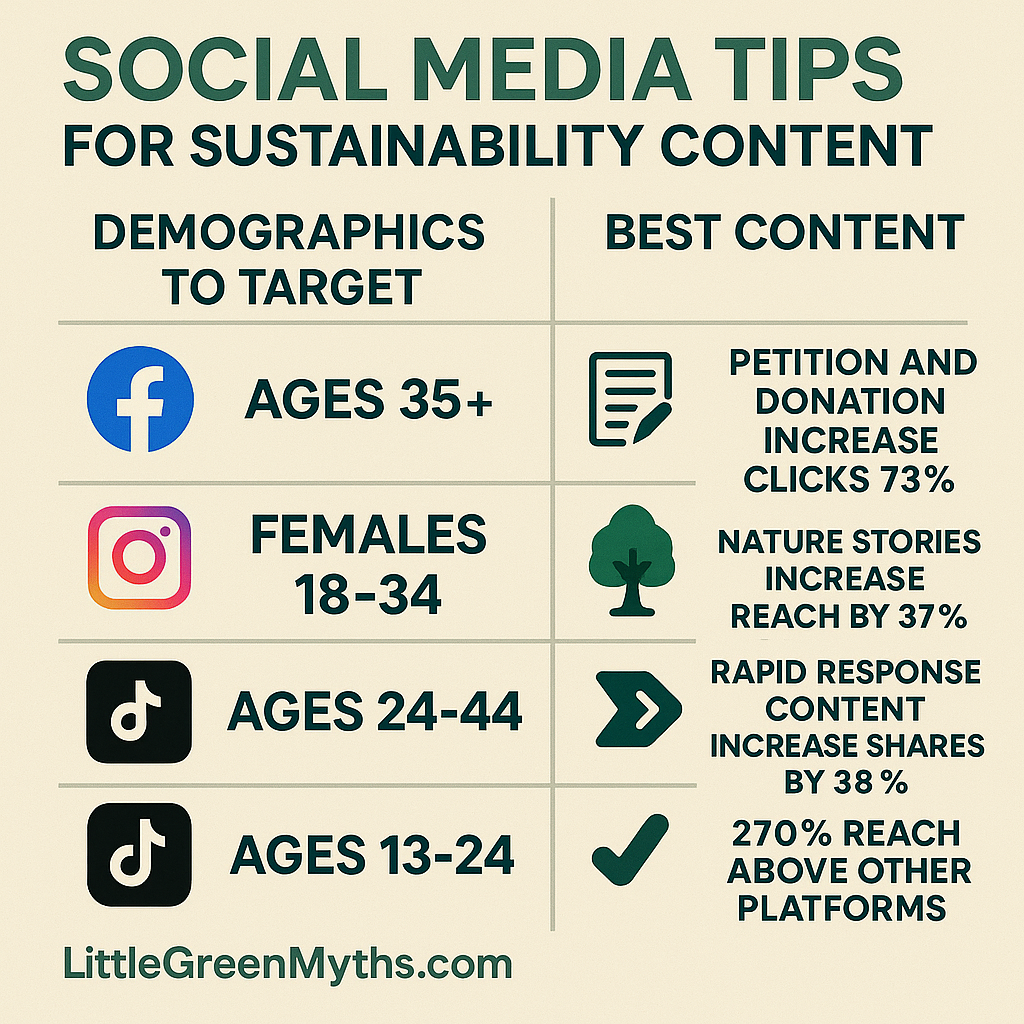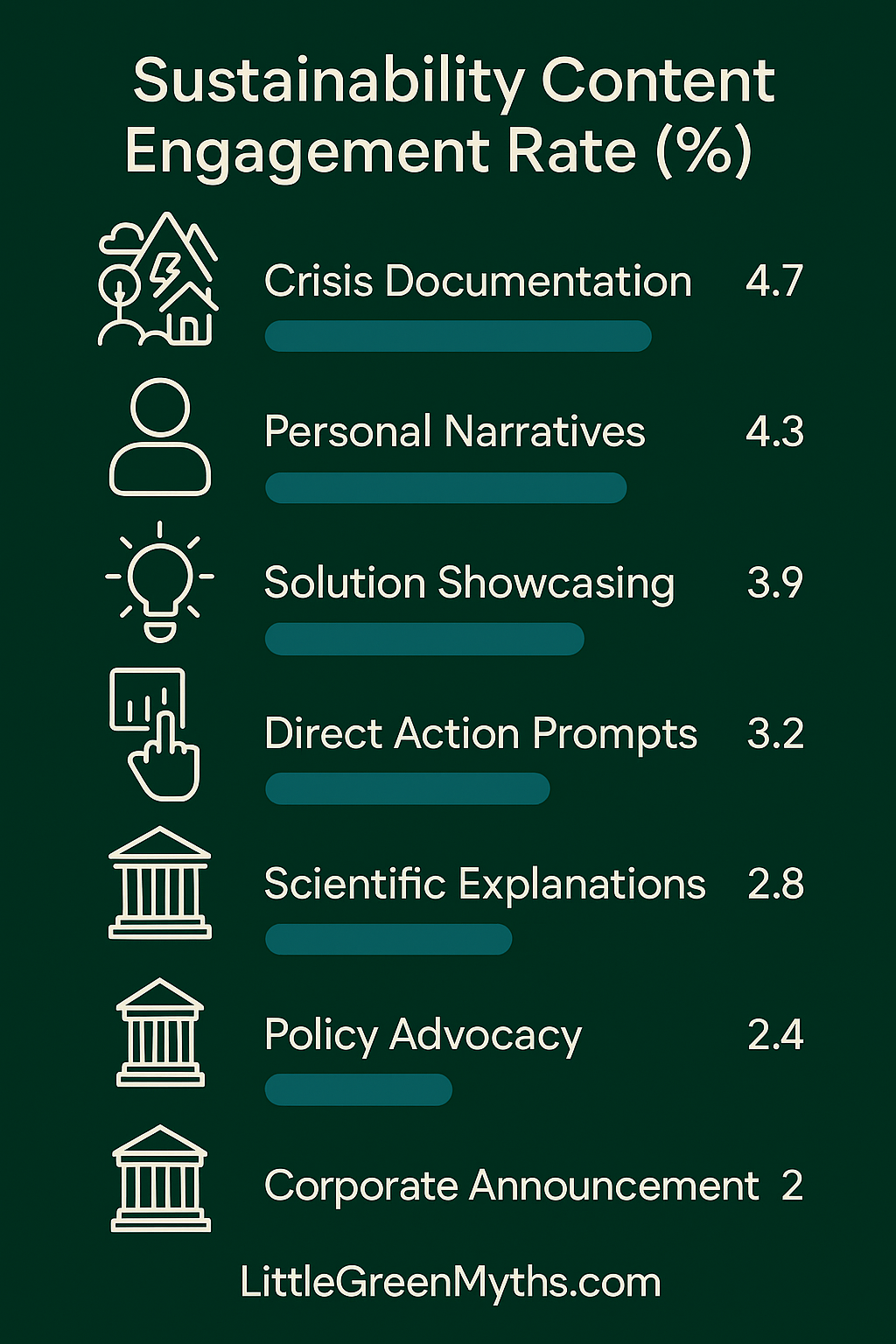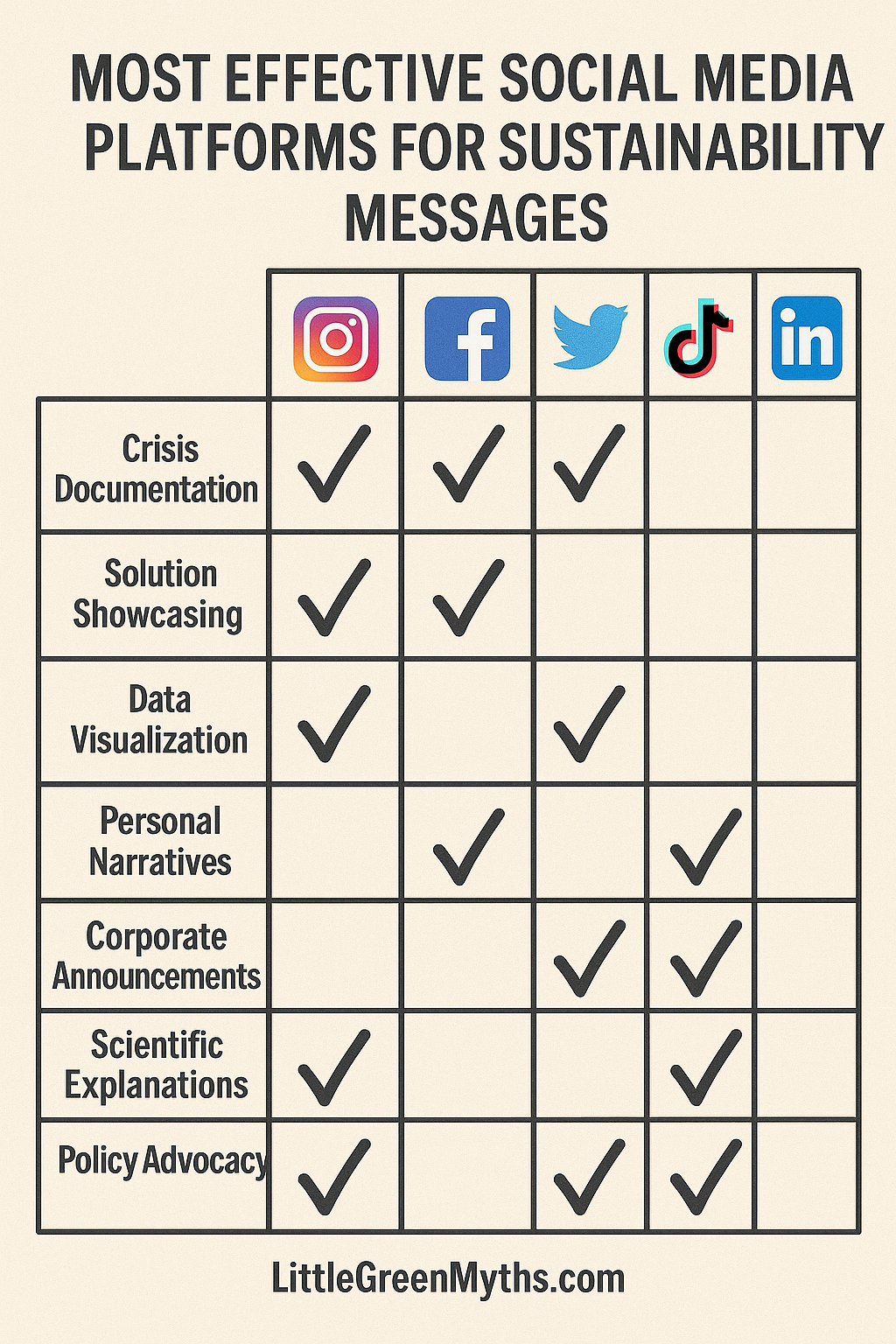Most Effective Social Media Strategies For Your Sustainability Content
If you use social media to promote your environmental message you know all too well how hard it is to go viral. There are millions of messages out there and the algorithm is always changing. It can be heartbreaking to put work into something and not get a single like.
Luckily a recent paper by Jie Zhang takes a deep look into the most effective strategies to get our sustainability message out there for the big platforms - Instagram, Facebook, Tiktok, X, and LinkedIn.
Zhang looked at articles from 2010 to 2024 focusing on social media use in environmental communication and activism and sustainability promotion. Zhang also analyzed 1,500 sustainability-related posts from Twitter, Facebook, Instagram, TikTok, and LinkedIn. Lastly, they interviewed fifteen experts who work either in environmental organizations or social media management departments or corporate sustainability departments or environmental communication research fields.
Comparing Social Media Platforms
Instagram garnered an average of 4.2% engagement rate for environmental content. When visual evidence was included, sharing rates increased by almost 3 times, and stories increased reach by 37%. As we would expect, Instagram content does better with better visuals. These benefits were highest for female audiences ages 18-34.
The Twitter audience is the most politically diverse and was best for reaching the 25-44 age group. Rapid response content was shared 38% more than other content. Unfortunately when misinformation was shared, it persisted for an average of 2.4 days. The most effective content is 1) concise data points, 2) timely response to environmental news, and 3) direct statements about corporate/policy accountability.
Facebook has the broadest age demographic reach, but is most effective for the 35+ audience for sustainability content. The most effective content was community-building focused, action-specific events, and detailed explainer content. Groups were able to generate 3.4x more sustained engagement.
When it comes to the type of action-oriented content, petition and donation requests for environmental issues generated a 72% click through rate. Sadly though misinformation persisted for 7 days on Facebook, so the battle to build trust will be more challenging on this platform.
TikTok
Not surprisingly, Tiktok is strongest in the 13-24 age group, the fastest growing environmental audience. The reach was nearly three times greater than for other platforms with five times as many shares for short content, less than a minute.
Individual creators using humor rule this platform, so if you are an organization you may need to work with an influencer. Best performing content included authentic and personal narratives, creative challenges and trends, and simplified explanations with visual aids.
LinkedIn kind of reminds me of the old professor smoking a cigar wearing a twead jacket with patches on the elbows. And that’s the audience too. It’s mostly for reaching industry professionals.
The most effective messaging is also very traditional and should be focused on business case frameworks, professional expertise highlights, and industry-specific sustainability metrics.
Because of this the information quality is 38% higher than for the other platforms. Solution-focused content received more than 3 times higher engagement than other platforms. Data-driven content performed 47% better than other content.
Most Effective Messengers
When it comes to messaging, we need to understand who our audience thinks is the most trustworthy and accurate. For social media these two aren’t always the same.
When it comes to trust, people trust environmental nonprofits the most and corporations the least. It’s surprising that people trusted influencers over the government. But in terms of accuracy the government shines, followed by environmental nonprofits. What is very clear is that corporations themselves should never be the messengers for environmental content.
If you are looking for engagement, go with nonprofits as they had the highest overall engagement rate with 27 million engagements for key campaigns leading to 2.1 million mobilizations and a 57% growth in donations. After nonprofits, best engagement came from corporations followed by governments.
Government engagement increased by 86% during emergencies, likely to do with either increased spend or focused algorithms. Their messages also performed better for local content.
As expected micro-influencers garnered more than 3 times the engagement when using personal narratives. They also saw a 72% higher comment ratio than other messengers.
Best Performing Sustainability Content
The most engaging content types were environmental crisis documentation and solution showcasing across all platforms. It could be beneficial to pair these two messages.
For instance following a refinery explosion, sharing related solutions that people can take action on would be compelling.
The least engaging topics are corporate announcements and policy advocacy, likely because both feel like you are trying to hard.
If you want your audience to retain the information its best to go with data visualizations and solution showcasing. The least effective messages are corporate announcements and direct action prompts.
If you need to convince your audience to take action, there are some effective approaches you can take. The most effective are direct action prompts, personal narratives, and solution showcasing. The least effective are the same ones with the lowest retention of information, scientific explanations and corporate announcements.
Spread of False Information
The spread of environmental misinformation, like greenwashing, follows platform-specific patterns, with Twitter showing highest initial spread velocities but also quickest corrections, while Facebook misinformation showed greater persistence. Sustainability content increasingly requires paid promotion, with organic reach declining 67% from 2018 to 2023. As expected, and because of algorithms, users with established environmental interests receive 83% more sustainability content in their feeds.
Across platforms 34% of viral environmental posts contained factual inaccuracies. Even more concerning, climate misinformation posts received 72% more engagement than correction posts. Only 11% of analyzed environmental content included citation of scientific sources, meaning it’s almost impossible to fact check.
Most Effective Social Media Platforms For Sustainability Messaging
The articles suggests approaches for more effective environmental communication on social media:
Platform-specific content strategies: Environmental messages tailored to the affordances and expectations of a platform outperform, and these benefits come at the cost of expertise in the platform versus simple cross posting.
Balanced emotional and rational appeals: The right sustainability content should be emotive but not purely emotional, basic but not only specified and based in the technical side of sustainability solutions, without falling into the manipulation of emotion.
Transmedia narratives: Organizations benefit from leveraging the strengths of each channel in order to develop coherent environmental messages that are built across multiple platforms.
Strategic timing and coordination: Reaching and engaging stakeholders, however, is not possible without synchronized posting during key moments, be it due to occurrences in the environment, policy decisions, or corporate announcements, at the intersection of the stakeholder groups significantly amplifying reach and multiplying impact.







